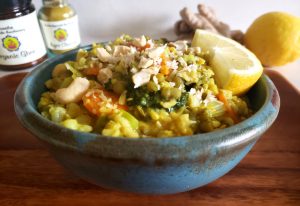 Kitchari is often thought of as a cleansing dish and is used in most Ayurvedic detox programs such as kitchari cleanses and panchakarma therapy. However, this versatile dish can just as easily be made to rejuvenate your body, nourish your mind, and increase your energy and vitality (Ojas). This particular kitchari recipe is great during times of high Vata (e.g. anxiety, restlessness, sleep disturbances, constipation), rejuvenation therapy, post-cleanse therapy, postpartum, post-illness, post-surgery, or anytime you feel like you need a warm, comforting boost of nourishment.
Kitchari is often thought of as a cleansing dish and is used in most Ayurvedic detox programs such as kitchari cleanses and panchakarma therapy. However, this versatile dish can just as easily be made to rejuvenate your body, nourish your mind, and increase your energy and vitality (Ojas). This particular kitchari recipe is great during times of high Vata (e.g. anxiety, restlessness, sleep disturbances, constipation), rejuvenation therapy, post-cleanse therapy, postpartum, post-illness, post-surgery, or anytime you feel like you need a warm, comforting boost of nourishment.
This kitchari recipe is very healing for the gut and digestive system, making it a great meal option during times of digestive distress. With the combination of mung beans and rice, this recipe becomes a perfect source of protein (meaning it contains all of the 9 essential amino acids) and an excellent source of dietary fiber. The cashews and coconut provide healthy fat, protein, and essential minerals such as iron, calcium, magnesium, and zinc; while the delicious variety of vegetables add a nice boost of vitamins A, B, C, K, biotin, and folate. Ghee is an Ayurvedic essential used to promote rejuvenation and the aromatic spices are sure to ignite your digestion. Altogether, this meal will revitalize your body, increase your immunity, boost your digestion, and promote healthy elimination.
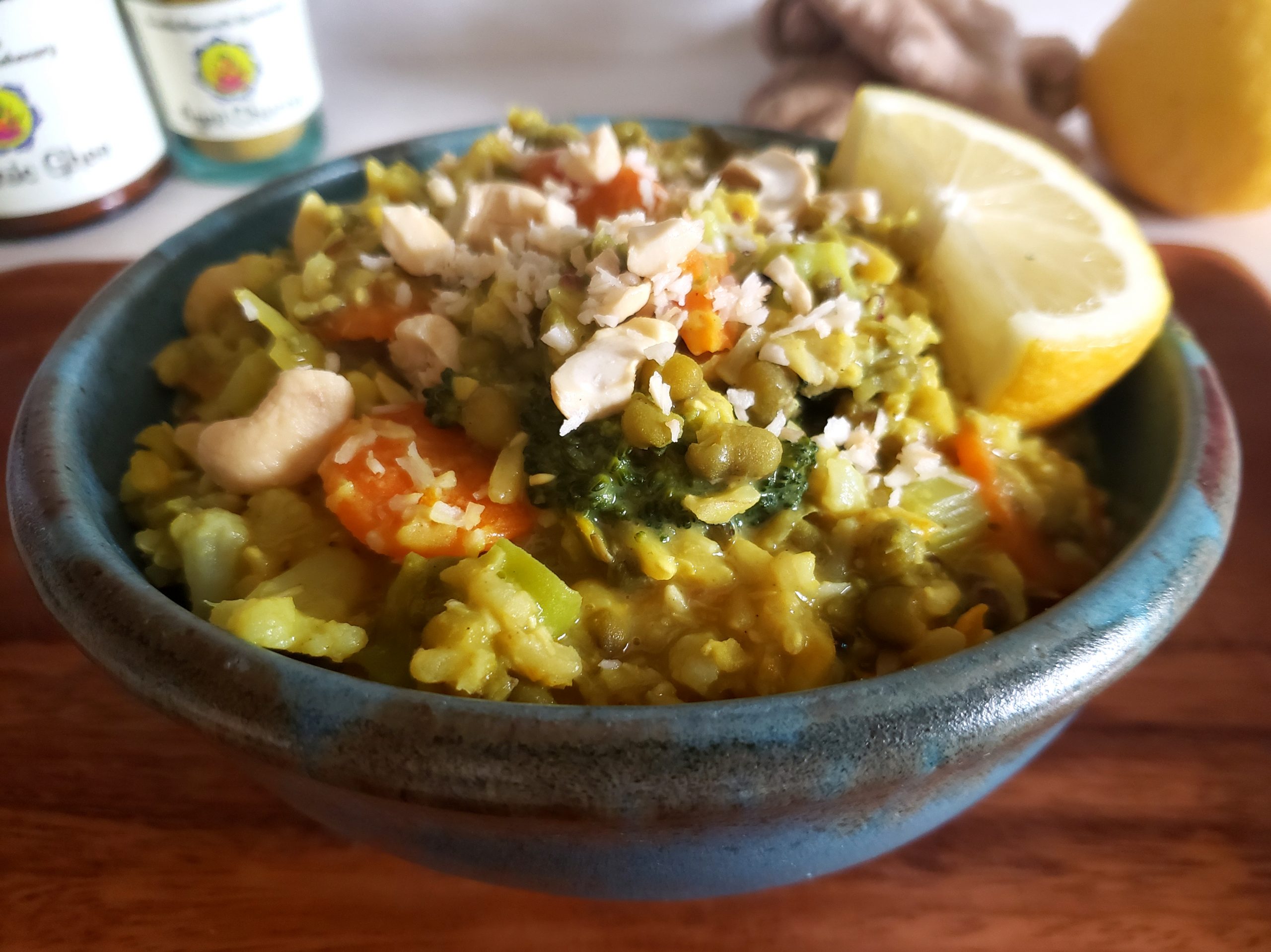
Rejuvenation Kitchari Recipe
Click here for a printable copy of this recipe.
- Doshic Effect: Vata↓, Pitta ↓, Kapha ↑↓*
- Serves: 4 to 5
- Prep Time: 5 minutes
- Cook Time: 45 to 50 minutes
*Kapha types can enjoy in moderation.
Materials
- Large soup pot
- Small frying pan
- Cutting board and knife
- Measuring cups and spoons
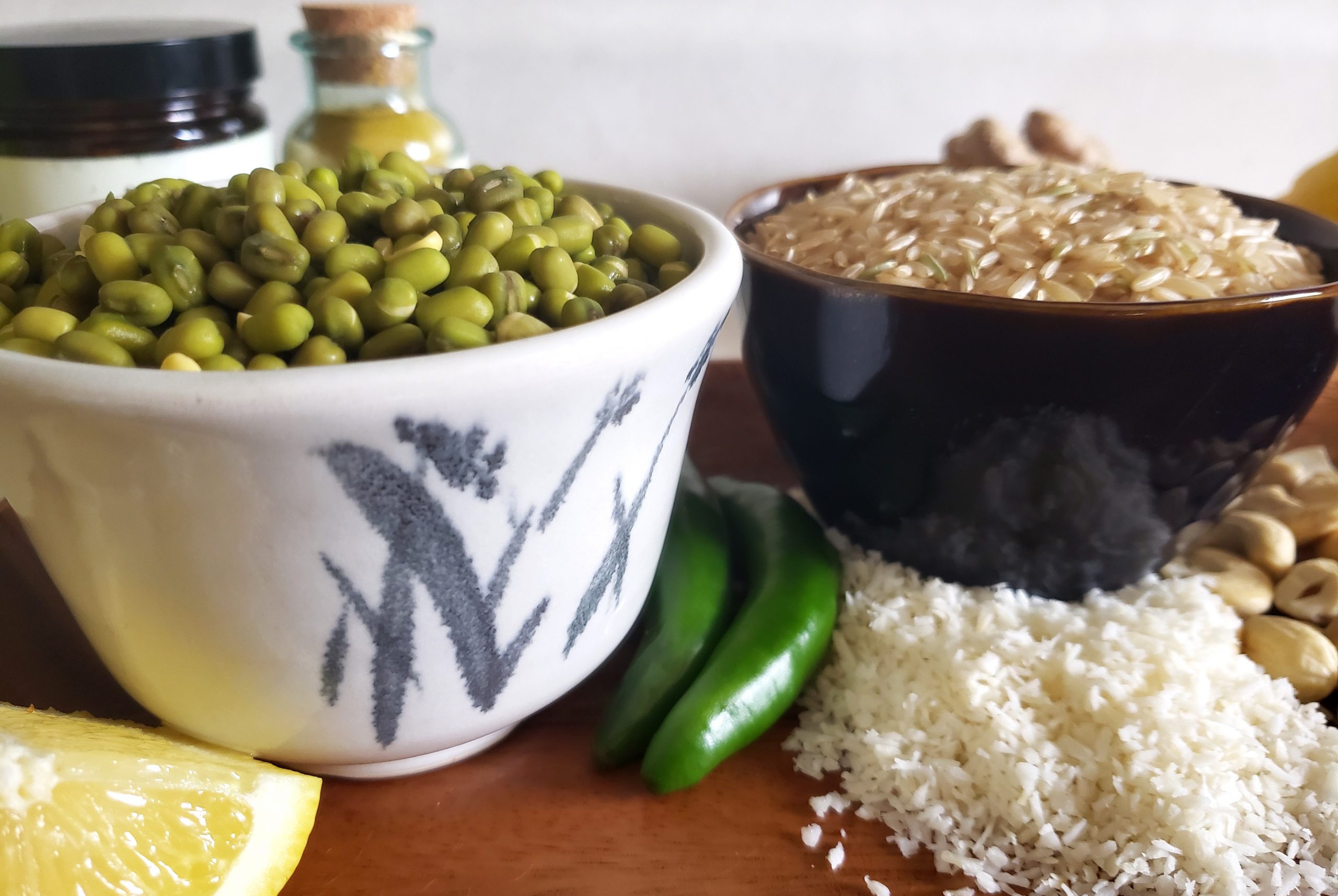
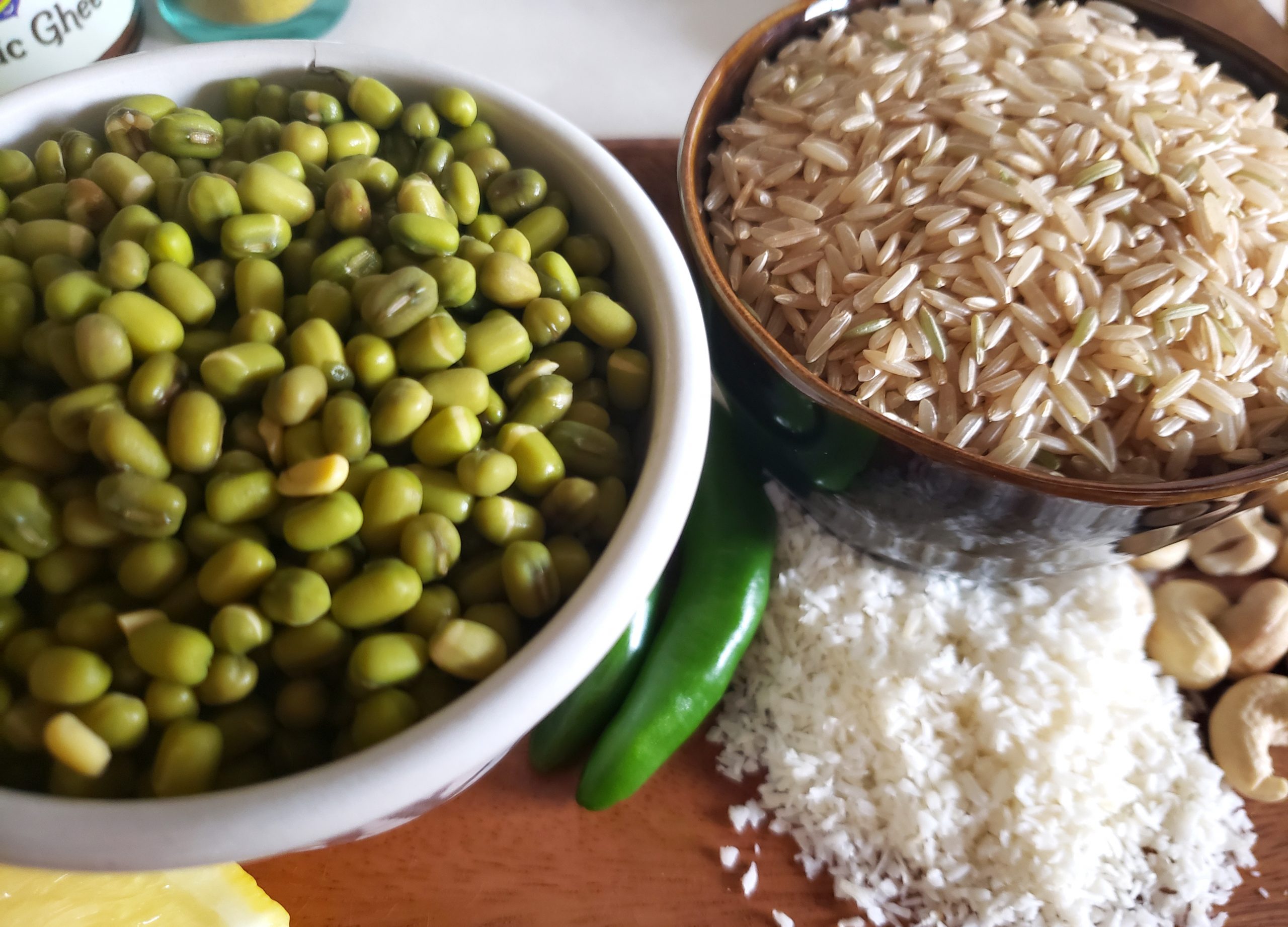
Ingredients
For the roasted cashews and coconut:
- 1 teaspoon ghee
- ¼ cup cashew pieces
- 3 tablespoons shredded coconut
For the kitchari:
- 1 ¼ cups whole mung beans, soaked
- 1 to 2 tablespoons sesame oil (use coconut oil for Pitta)
- ½ teaspoon cumin seed, whole
- ½ teaspoon brown mustard seed, whole (omit for Pitta)
- ⅛ teaspoon freshly ground black pepper
- 2 tablespoons finely minced ginger (about 2-inch cube)
- 1 teaspoon finely minced serrano pepper (optional, omit for Pitta)
- 2 teaspoons Agni Churna (or Ayurvedic spice blend of choice)*
- 8 cups chicken broth or veggie broth (substitute with water)
- ¾ cup brown rice
- 1 cup chopped broccoli
- 1 cup chopped cauliflower
- 1 medium carrot, chopped
- 2 celery stalks, chopped
- 1 lemon, juiced
- 1 teaspoon salt
- 1 tablespoon ghee (use 1 teaspoon for Kapha)
- Chopped scallions, for garnish (optional)
- Chopped cilantro leaf, for garnish (optional)
*If an Ayurvedic spice blend is not available, substitute with 1 teaspoon turmeric powder, and ¼ teaspoon each of cumin, fennel, and coriander powder.
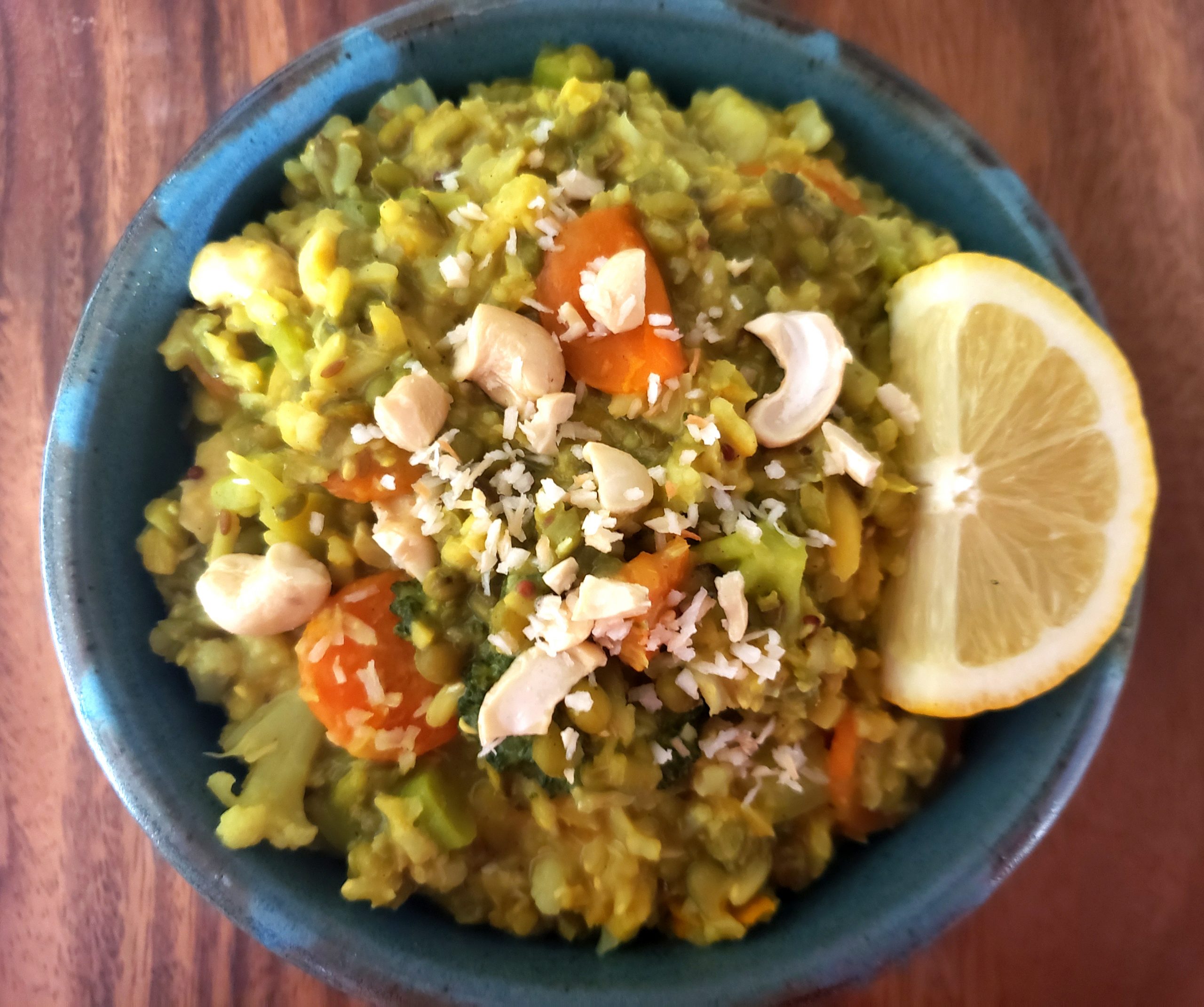
Directions
Click here for a printable copy of this recipe.
Roasting the cashews and coconut:
*Feel free to make extra to add on top of each individual serving (I do!)
1. To save time, it is recommended to do this step while the kitchari is cooking.
2. Place a small frying pan over medium heat and add 1 teaspoon of ghee.
3. Once hot, add in the cashews and coconut.
4. Sauté here for 2 to 3 minutes or until the coconut and cashews are slightly brown and toasted, stirring constantly.
5. Once toasted, take the pan off of the heat and set aside until needed.
Making the kitchari:
1. Soak the mung beans overnight in a large container of water. If time is short, place the beans in a glass container and cover them with boiling water. Let the beans soak in the hot water for a minimum of 30 minutes, although at least 3 to 6 hours would be ideal.
2. Strain the beans and discard the water.
3. Heat the sesame oil in a large pot over medium heat. Add in the cumin seeds, brown mustard seeds, and black pepper. Sauté for 2 minutes, stirring frequently.
4. Add in the minced ginger and serrano pepper (if using). Sauté for one minute, stirring constantly.
5. Add in the Agni Churna and sauté for 30 seconds, stirring constantly.
6. Add in the broth (or water), increase the heat to high, and bring it to a boil.
7. Once boiling, reduce the heat to medium and add in the mung beans and brown rice. Cook, mostly covered, for 25 minutes. Stir every 10 minutes.
8. While cooking, begin to chop the broccoli, cauliflower, carrots, and celery.
9. After 25 minutes, add in the carrots and celery. Continue to cook on medium heat for 5 minutes. Stir halfway through.
10. Add in the broccoli and cauliflower. Reduce the heat slightly to medium-low and cook for 10 to 15 minutes. Stir every 3 to 5 minutes. If at any point the kitchari becomes too dry, carefully add in more broth or water by the ¼ cup.
11. After 10 minutes, check on your kitchari. If the beans, rice, and veggies are not all soft and well-cooked, reduce the heat to low, cover the pan completely, and cook for an additional 5 minutes (or until the preferred texture is reached). Check and stir every 1 to 2 minutes.
12. Once the kitchari is cooked to your desire, turn the heat off. Add in the salt, lemon juice, ghee, and roasted cashews and coconut. Stir well until all of the ingredients have been evenly blended.
13. Serve in bowls. Garnish each bowl with a handful of scallions (if using) and cilantro (if using). Sprinkle with extra roasted cashews and coconut if available.
14. Enjoy this nourishing kitchari dish as a hearty, healthy lunch or dinner anytime you need a boost of energy and vitality!
REHEATING TIP
Although food is always best when eaten fresh, leftovers can be stored in an airtight glass container for 1 to 2 days. When reheating, use only the amount that is needed at that time (never reheat food more than once!). Place the kitchari in a small pan. Reheat, covered, on a very low setting for 10 to 15 minutes, stirring frequently. Once heated, add a dash of salt, splash of fresh lemon juice, and a small spoonful of ghee. Sprinkle with extra roasted cashews and coconut if available. Stir well and enjoy!
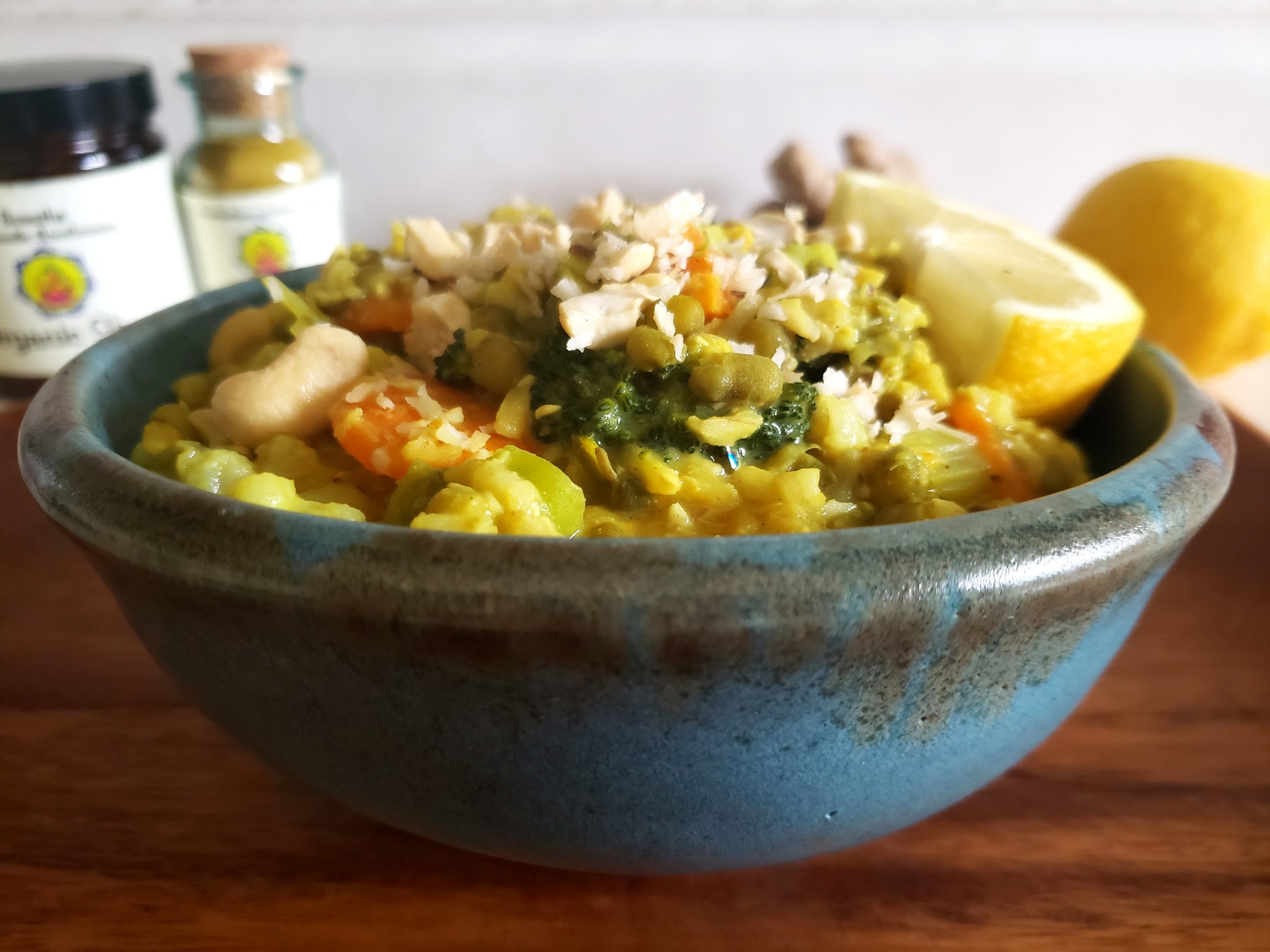
Try my Agni Churna Spice Blend!
Discover more healing recipes with my 30-Minute Ayurvedic Cookbook!

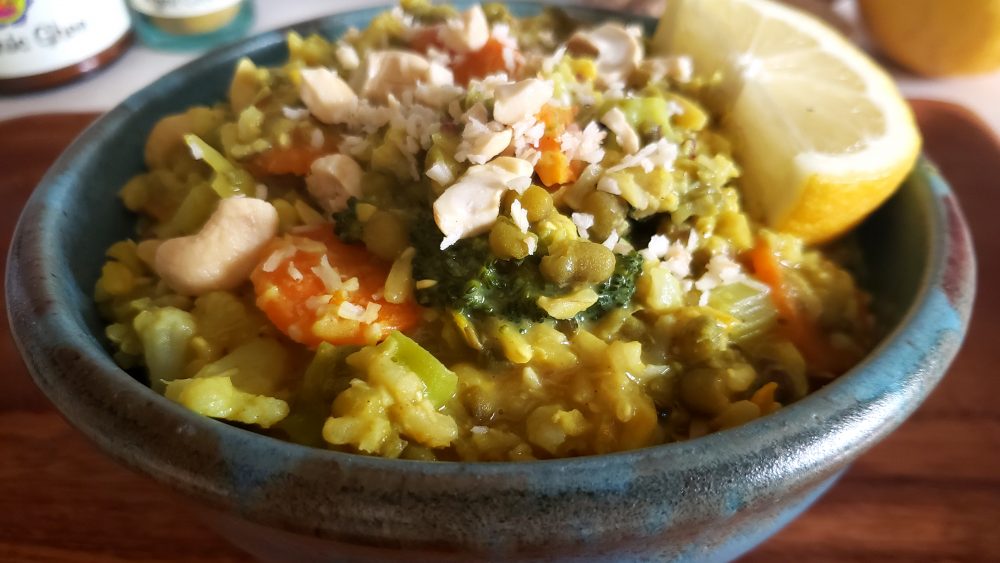
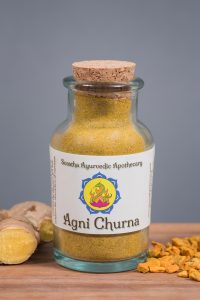
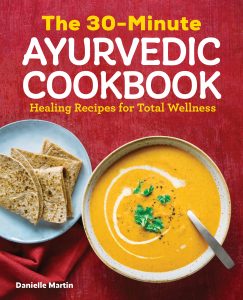
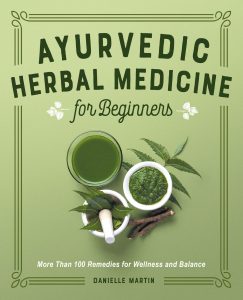

I made this last night. My kitchen smelled heavenly and the flavor was fantastic.
This is the first time I used veggie broth for the liquid. I’m just coming off a 7 day
kitchari cleanse so all the flavors popped in my mouth. I don’t do well with cauliflower
so I doubled the broccoli. Love the cashew/coconut addition. Thanks for what wonderful
recipe. Louise